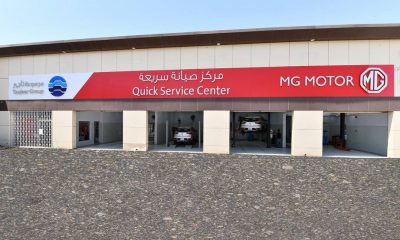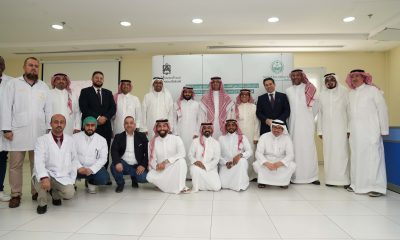Saudi Arabia is positioned to capture up to 45 percent of Red Sea and 35 percent of Gulf feeder trade as regional volumes rise to 41 million TEUs by 2030.
Feeder shipping delivers returns on assets of 17 to 23 percent, outperforming other logistics sectors and aligning with Saudi Arabia’s growth priorities.
The 8 billion dollar feeder market across MEEAT and South Asia centers on Saudi Arabia, with geography, infrastructure, and policy all aligned.
Red Sea container volumes are set to nearly double by 2030, reinforcing Saudi Arabia’s role as a key East West logistics hub.
As global logistics undergo rapid transformation, new research from Arthur D. Little (ADL) positions Saudi Arabia as a future powerhouse in feeder shipping, a high-potential segment of maritime trade set to grow to $451 billion globally by 2030. The Middle East, East Africa, Turkey (MEEAT), and South Asia region alone is forecast to account for $8 billion of that total, making it one of the most strategically valuable feeder markets in the world.
At the heart of this regional surge is the Kingdom of Saudi Arabia. According to ADL’s latest Viewpoint, Unlocking Opportunities in the Feeder Shipping Sector Saudi ports are poised to capture up to 45 percent of Red Sea feeder trade and 35 percent of Gulf trade, driven by infrastructure investment, geographic advantage, and Vision 2030’s logistics transformation agenda. Red Sea throughput alone is projected to nearly double from 12 million TEUs in 2021 to 23 million by 2030, positioning the Kingdom as a linchpin for intra-regional and East–West container movement.
Feeder shipping, the practice of transporting containers between smaller regional ports and major global hubs, is attracting growing interest from operators and investors due to returns on assets of 17 to 23 percent. This performance significantly outpaces returns in other freight and logistics segments such as rail, trucking, and traditional maritime transport. While historically overlooked, the sector has become an increasingly vital part of the global shipping ecosystem.
“Saudi Arabia sits at the intersection of macroeconomic shifts in global trade, regional port infrastructure growth, and heightened investor appetite for logistics assets that deliver strong, stable returns,” said Paolo Carlomagno, Partner at Arthur D. Little “Its ability to combine geographic proximity to high-growth corridors with government-backed investment strategies creates a uniquely scalable feeder shipping environment that few markets globally can match.”
ADL’s analysis outlines a phased strategy for capturing this opportunity. New entrants to the Saudi market are encouraged to adopt asset-light models, chartering vessels and building lean, responsive operations before scaling through asset ownership and deeper integration with major liners, freight forwarders, and regional exporters. This approach helps reduce capital risk while allowing operators to adapt quickly to demand and align with specific Saudi trade flows in the Red Sea, Gulf, and Arabian Sea.
“Saudi Arabia offers a rare combination of volume potential, policy alignment, and port readiness that makes it a natural launchpad for feeder shipping operations,” said Alexandre Sawaya, Principal at Arthur D. Little, Middle East. “The Kingdom is no longer a peripheral player in maritime trade. It is fast becoming a focal point for regional connectivity and a strategic base for operators seeking scale and resilience.”
The report also highlights feeder shipping’s compatibility with Saudi Arabia’s environmental priorities. Feeder vessels, being smaller and more agile, are easier to retrofit for clean fuels such as methanol, biodiesel hybrids, or hybrid-electric propulsion. This flexibility supports the Kingdom’s goals to reduce carbon emissions by 25 percent by 2030 and reach net-zero by 2060.
With container volumes rising, infrastructure expanding, and consolidation accelerating across the shipping landscape, ADL concludes that Saudi Arabia is uniquely positioned to lead the next phase of growth in feeder shipping.


 أسواق5 سنوات ago
أسواق5 سنوات ago
 عقارات5 سنوات ago
عقارات5 سنوات ago
 سيارات5 سنوات ago
سيارات5 سنوات ago
 فن5 سنوات ago
فن5 سنوات ago
 منوعاتسنتين ago
منوعاتسنتين ago
 عطورات3 سنوات ago
عطورات3 سنوات ago
 اتصالات وتقنيةسنتين ago
اتصالات وتقنيةسنتين ago
 عطورات3 سنوات ago
عطورات3 سنوات ago






You must be logged in to post a comment Login